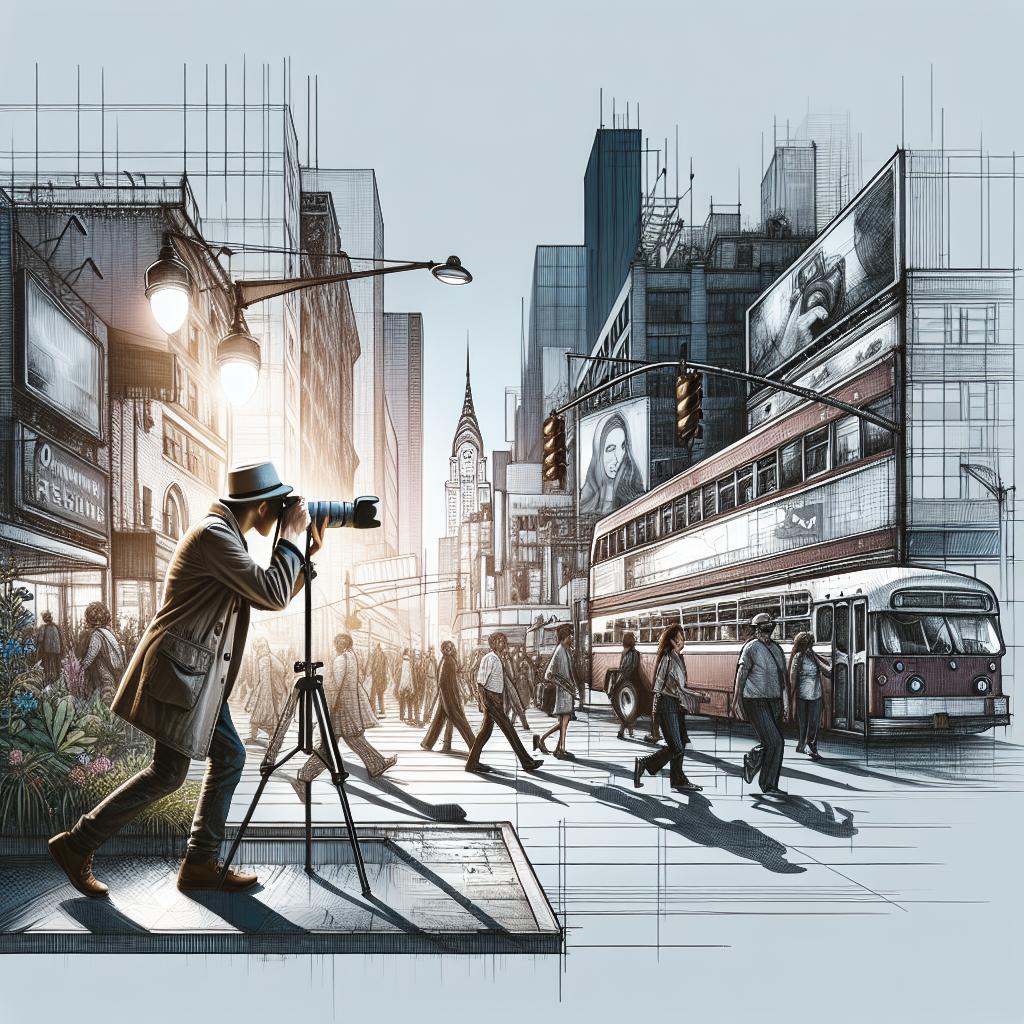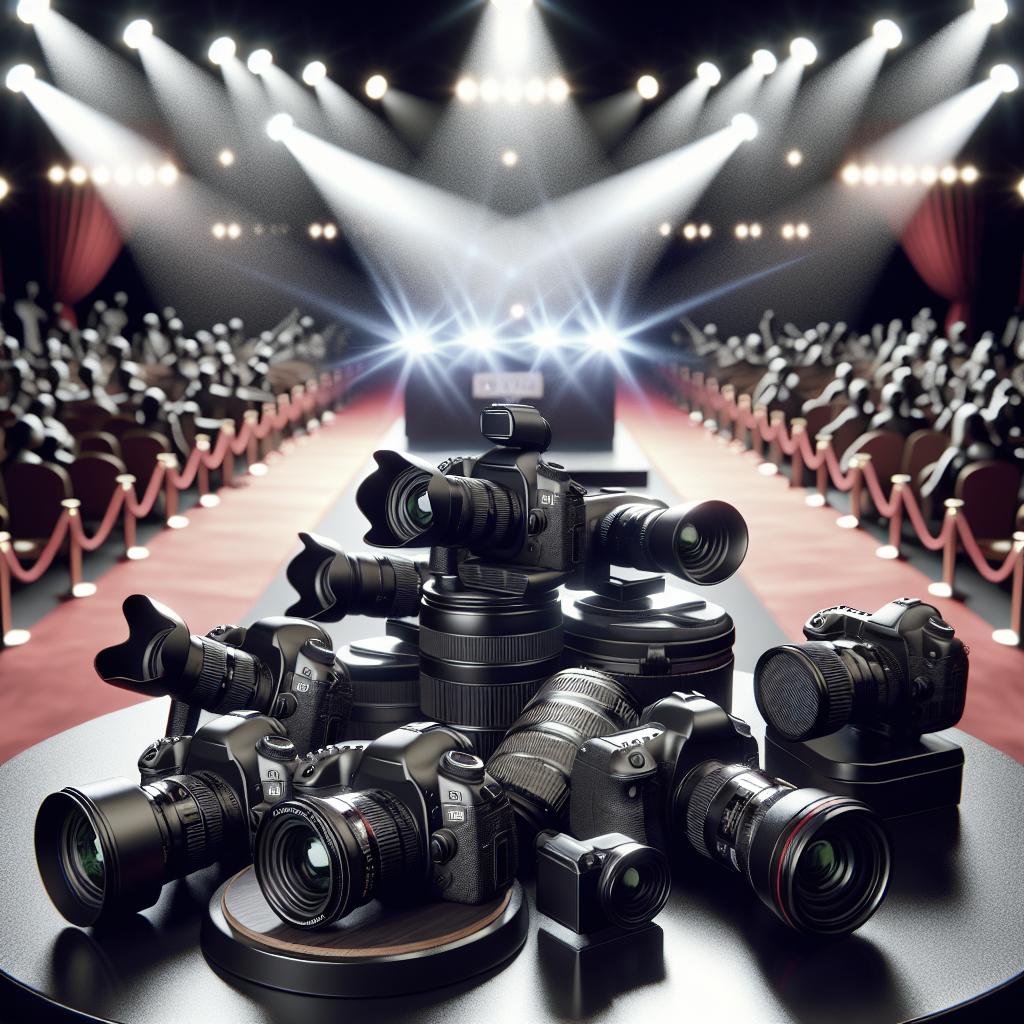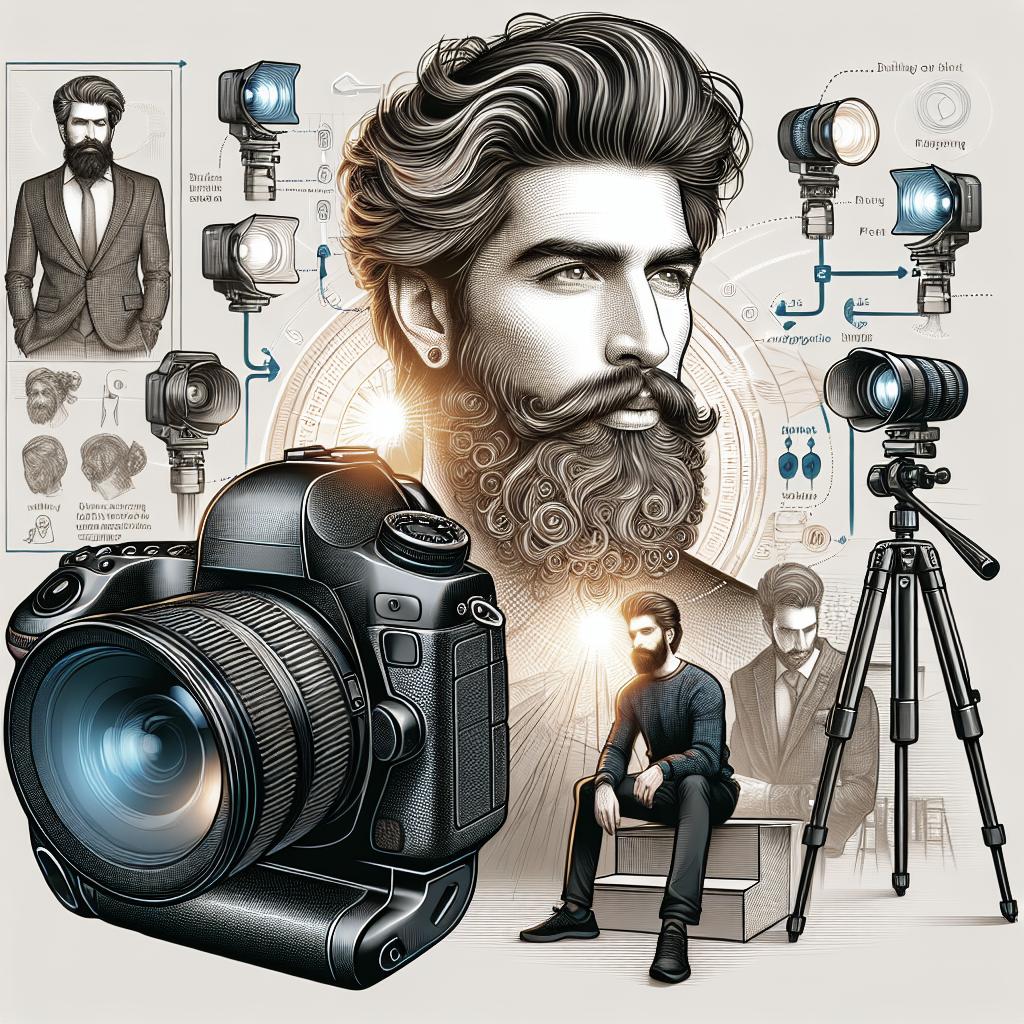< lang="en">
Candid photography has an allure that’s hard to match. It captures real, unscripted moments that convey emotions and stories in a way that posed pictures often fail to achieve. Whether you’re looking to capture genuine smiles, fleeting emotions, or spontaneous interactions, mastering candid photography takes a mix of technical skills and a keen eye for the right moment. In this guide, you’ll learn what candid photography is, why it’s important, and how to perfect it. We’ll also discuss the best tips for capturing authentic moments, storytelling through your images, and what camera gear can help you achieve the best results. You’ll walk away equipped not only to take better candid photos but also to appreciate the art and science behind capturing life as it happens.
What is Candid Photography?
Candid photography refers to capturing photographs of people without them being aware of the camera’s presence. Unlike traditional portraiture, which often involves posed shots, candid photography thrives on spontaneity and naturalness. The fleeting moments, raw emotions, and genuine expressions caught in candid photos make them resonate on a different level compared to scripted images.
These photographs are often taken during everyday activities, at events, or in unexpected situations. The primary goal is to document moments as they unfold, preserving the authenticity and integrity of the scene. Whether you are photographing a wedding, a street scene, or even a family outing, candid shots offer an unfiltered view into human life, rich in detail and emotion.
Why Candid Photos Are Important
Candid photos are significant because they capture the essence of a moment. They provide a genuine glimpse into the subject’s life, revealing emotions and interactions that are often missed in posed shots. These pictures tell stories that are raw and real, offering viewers a more intimate and authentic experience.
In a world inundated with heavily edited and posed images, candid photography brings a refreshing authenticity. This form of photography lets your subjects be themselves, showing their true personalities. For photographers, it represents an opportunity to hone observational skills and connect with their subjects on a deeper level, bringing out more meaningful and impactful images.
How to Shoot Candid Photos
Light, Composition, Moment
Mastering light, composition, and timing are crucial in candid photography. Natural light is your best friend; it creates softer, more genuine scenes that complement the candid nature of your photos. Pay attention to the quality, direction, and color of the light in your environment to maximize its effect.
Composition is equally important. While candid shots seem spontaneous, a good composition can make them stand out. Use leading lines, the rule of thirds, and framing to enhance your shots. And finally, capturing the right moment is key. Always be ready to click the shutter at the perfect time to immortalize that split-second expression or interaction.
Unposed (or More Natural Posing)
Unposed photography captures the true essence of the subject. Encourage people to go about their activities naturally—this could mean laughing with friends, playing with kids, or even reading a book. The less scripted the moment, the more genuine the resulting photo will be.
For those rare times when a bit of direction is needed, aim for natural posing. Instead of instructing your subjects to stand still and smile, ask them to engage in an activity they enjoy. This form of gentle guidance maintains the authenticity of the moment while helping to construct an appealing frame.
Find the Moment, Tell the Story, Be the Storyteller
Candid photography is all about storytelling. To tell a compelling story through your photos, you must first find the moment worth capturing. This means not just looking but truly observing your surroundings and the interactions taking place.
Once you’ve identified the moment, think about the narrative you want to convey. Each photo should contribute to a larger story, offering insights into the emotions, relationships, and dynamics within the scene. As a storyteller, you’re not just an observer but an active participant in capturing the essence of life itself.
Tips for Better Moments in Your Candid Photos
Effective candid photography involves more than just pointing and shooting. The goal is to capture moments that possess a natural, unscripted quality while still adhering to the principles of good photography. The following tips aim to enhance the authenticity and artistic value of your candid shots.
Developing a keen sense of timing, perfecting your observation skills, and blending seamlessly into the environment are critical for seizing those perfect candid moments. Moreover, honing your technical skills will ensure the moments you capture are as striking visually as they are emotionally compelling.
Finding the Moment
1. Be a good listener & observer
Successful candid photography starts with being an attentive observer. Pay attention to the nuances and details in your environment. Listen for laughter, engaging conversations, or any emotional cues that may lead to compelling photo opportunities.
Along with active listening, develop a habit of scanning your surroundings constantly. Observe body language, facial expressions, and interactions. Being present and involved in the moment allows you to anticipate and capture fleeting instances that others might miss.
2. Shoot through the moment to get the true moment
Don’t just wait for the perfect moment to unfold; shoot through it. Taking photos continuously as a scene evolves increases your chances of capturing the most authentic expressions and actions. The true essence of the moment often lies between the expected and the unexpected.
Continuous shooting mode can be particularly useful here. Rather than taking one shot, capture a series of images. This technique can help you document the progression of a moment, revealing the narrative in its entirety and capturing nuanced shifts in emotion or action.
3. Carry a camera be hungry for moments!
Always having a camera at the ready is vital for candid photography. The more you practice capturing candid moments, the more skilled you will become. Make a habit of carrying a camera or a good camera phone wherever you go, ready to seize opportunities as they come.
Your hunger for moments should drive you to continually seek out and capture interesting scenes. This passionate pursuit not only improves your technical skills but also sharpens your eye for meaningful moments, enabling you to inject your photos with life and spontaneity.
4. Shoot what it feels like!
Candid photography isn’t just about documenting what you see; it’s about capturing what you feel. Aim to convey the atmosphere, emotions, and energy of the moment. Think about what made the moment special to you and try to encapsulate that feeling in your shot.
Shooting with emotion adds an extra layer of depth to your work. It allows viewers to connect with your images on a visceral level, feeling the joy, sadness, excitement, or serenity that you aimed to capture. Trust your instincts and let your emotional responses guide your photography.
Telling the Story
5. Do I need to show everything or can I get a little closer?
Sometimes, less is more. You don’t need to show every element in a scene to tell a compelling story. Getting closer to your subject can help you highlight the most important details and emotions, making your photo more impactful and poignant.
Zooming in or focusing on a specific subject or detail can also lead to more intimate and powerful images. By cropping out extraneous details, you can emphasize the core emotion or action, drawing the viewer’s attention to what you want them to experience.
6. Is there somewhere else that I can go that will make context easier to read?
Sometimes the best vantage point isn’t where you’re standing. Changing your perspective can offer a new context and clarity to your storytelling. Move around, experiment with different angles, and find a position that enhances the narrative you’re trying to convey.
Think about how the background and environment contribute to the story. Perhaps a higher or lower angle, or even shooting through an obstruction, can add layers of meaning and depth to your images. The right context can make your candid photo not just a snapshot, but a complete narrative.
7. Human eyes are lazy, make it simple
Complex, cluttered compositions can confuse viewers and dilute the impact of your photo. Simplification is key. Aim for clean, straightforward compositions that guide the viewer’s eye to the most important elements of the scene.
Avoid unnecessary distractions in your frame. Use techniques like selective focus and framing to isolate your subject and eliminate background noise. Simplicity will make your photos more compelling and easier to interpret, enhancing the emotional resonance of the captured moment.
Which Brings us To the Storyteller
8. Connection between subject & viewer is key (not photographer)
Capturing a genuine connection between the subject and the viewer is more important than showing how skilled the photographer is. A good candid photograph draws viewers in, making them feel as if they are part of the moment.
Focus on the emotions and interactions of your subjects. Strive to create images that evoke empathy, curiosity, and connection. The strongest candid photos are those where the viewer feels a direct link to what’s happening in the frame, experiencing the moment almost firsthand.
9. What do YOU find most interesting? Let that direct you.
Your unique perspective as a photographer is what sets your work apart. Trust your instincts and intuition. Focus on what you find most interesting or emotionally compelling and let that guide your shot selection and composition.
Don’t try to copy what others are doing or conform to popular trends. Your personal vision and interpretation of a moment will yield more authentic and resonant photos. Embrace your individuality and let it shine through in your candid photography.
10. Observe and Document, don’t interfere… but be Present
While capturing candid moments, it’s crucial not to interfere with the scene. Your role is to observe and document life as it happens, without altering or influencing it. This non-intrusive approach ensures the authenticity and spontaneity of your photos.
At the same time, being present and aware of your environment helps you to anticipate moments and position yourself advantageously. A delicate balance between passive observation and active readiness will allow you to capture the genuine essence of a moment.
Best Camera Gear for Candid Photos
Best Cameras for Candids
Choosing the right camera can significantly impact your candid photography. Compact, mirrorless cameras are excellent choices due to their lightweight design and silent operation. Cameras like the Sony Alpha a6600, Fujifilm X100V, or Canon EOS M50 offer professional-quality images while being easy to carry around discreetly.
DSLRs can also be used effectively, but their bulkier size might make you more noticeable. Still, cameras like the Nikon D7500 or the Canon EOS 90D are excellent for those who prefer traditional DSLRs. Whichever camera you choose, make sure it has good low-light performance and fast autofocus capabilities.
Best Lenses for Candid
The lens you choose can dramatically influence the effectiveness of your candid shots. Prime lenses, particularly those in the 35mm to 50mm range, are fantastic for capturing natural scenes with a field of view similar to human eyesight. Lenses like the Canon EF 50mm f/1.8 or the Sony 35mm f/1.8 are perfect for unobtrusive street and candid photography.
Zoom lenses like a 24-70mm f/2.8 allow you to adapt quickly to changing scenes and distances. These lenses provide versatility without compromising image quality, making them ideal for capturing candid moments from various perspectives.
Review of Tips for Candid Shots
To master candid photography, remember to be an astute observer and a good listener. Carry your camera everywhere and always be on the lookout for those perfect moments. Shoot continuously to capture the full essence of a scene and don’t be afraid to simplify your compositions for more impact.
Focus on telling a story through your images and consider the emotional and contextual elements that make the moment special. Trust your instincts and prioritize the connection between the subject and the viewer over technical perfection. Choose your gear wisely to support your candid photography goals.
More Educational Content:
If you enjoyed this guide and are looking for more resources to improve your photography skills, consider reading our articles on “Mastering Street Photography,” “The Art of Using Natural Light,” and “Creating a Stronger Photographic Narrative.”
About the Author
Lucas Martin is a 23-year-old journalism and communications graduate with a passion for engaging and dynamic writing. With internships in local media and successful blog projects, Lucas enjoys exploring subjects like travel, technology, and innovation. His strong research skills and command of grammar make him a valuable writer in the online media and technology sectors. Currently, Lucas is honing his skills in SEO writing while staying updated with the latest market trends.
| Section | Main Points |
|---|---|
| What is Candid Photography? | Capturing unscripted moments; natural, everyday activities |
| Why Candid Photos Are Important | Reveal true emotions; offer authenticity in a posed-photo world |
| How to Shoot Candid Photos | Master light, composition, timing; natural poses; storytelling |
| Tips for Better Moments | Be observant; continuous shooting; carry a camera; shoot emotions |
| Finding the Moment | Be an active listener; shoot through moments; be ready for opportunities |
| Telling the Story | Focus on key elements; change perspective; simplify composition |
| Which Brings us To the Storyteller | Focus on subject-viewer connection; trust your interests; be non-intrusive |
| Best Camera Gear | Compact, mirrorless or DSLR cameras; prime lenses (35-50mm) or zoom lenses |
| Review | Be observant; carry a camera; simplify compositions; tell compelling stories |
| More Educational Content | Additional articles on related photography skills |
| About the Author | Lucas Martin, journalism and communications graduate, aspiring SEO writer |


